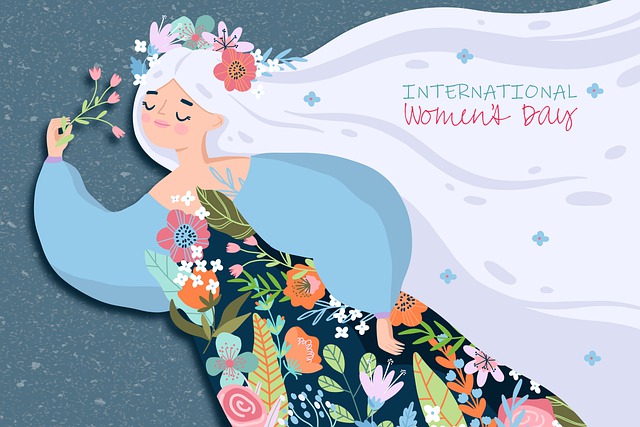
Women’s History Month
Throughout the month of March, we celebrate Women’s History Month and pay homage to the many contributions of strong and powerful women. Women who fought for the right to vote and who fought for the right to work. Women leaders, women in sports, women in arts, women in science, and many more. It’s when we recognize the legacy of women who fought hard to make the world a better place. Now, everyday women hold the opportunities to continue this legacy and make our own history.
The History of Women’s History in March
To me, women’s history is about celebrating the many efforts and achievements of women in our society. It’s a huge round of applause to the women who made an impact on their communities and the world. It also shows recognition of the accomplishments of those women who inspired and still inspire many to this day. Have you ever wondered why we celebrate it in March though? I do too! And looking into the reason behind the month, I found even more interesting related history.
The Myth
According to Britannica, a common myth about the story claims that on March 8, 1857, a group of women garment workers in New York City held a strike for better working conditions and voting rights. Eventually, they formed a union, despite undergoing police harassment in the process. As it turns out, no evidence of this strike or the union exists. In the late 1970s, historian Françoise Picq noticed a lack of any personal accounts or newspaper articles about the strike or the women. Moreover, the socialist leaders who founded International Women’s Day never mentioned this event as the precursor for the month.
The True Story
The truth of how Women’s History Month actually started is very interesting.
According to Britannica, “International Women’s Day was first conceived at the Second International Socialist Women’s Conference in 1910. Its leaders, notably German activist Clara Zetkin, wanted to mobilize working women in a setting apart from the mainstream feminist movement, which they felt overlooked working women in favour of the bourgeois.” In addition, in 1921 Zetkin wanted to honor a worker’s strike in Petrograd that occurred on March 8, 1917. This event marked the start of the Russian Revolution.
In Europe, people loved the idea of a day to honor women workers; in the United States, however, people were hesitant. This was because of the socialist and communist roots of the holiday, especially with ongoing Cold War tensions. To make the concept more acceptable to American feminists, the myth of a strike that happened in America was created.
How the Celebration Evolved

In the 1970s, American feminist groups wanted to expand women’s history in schools. So, they expanded International Women’s Day into Women’s History Week. The United Nations formally sponsored the annual celebration of International Women’s Day in 1975. In 1980, President Jimmy Carter nationally recognized the week of March 8th as National Women’s History Week.
As the years went on, everything went in a positive direction that by 1986, 14 states recognized March as Women’s History Month. In 1987, the U.S. Congress established Women’s History Month as a federally recognized month of observance.
The Importance of Women’s History
I really admire a quote from the National Women’s History Alliance that states, “For girls, knowing women’s achievements expands their sense of what is possible. For all of us, knowledge of women’s strengths and contributions builds respect and nourishes self-esteem – crucial to all children and adults now, and in the years to come. Educators are willing, often eager, to introduce women’s history.”
It’s important for young girls today to understand they can be and can do anything they want in this world. There are so many iconic women that proved that and still inspire others in a positive and powerful way to this day.
Women’s History in Las Vegas: Helen Stewart

There are a few women who helped build and define Las Vegas and deserve recognition. One of the most notable is Helen J. Stewart, a Southern Nevada pioneer considered “the first lady of Las Vegas.”
Helen’s Contributions
According to the National Park Service, Helen also holds the title as “first” for several other prestigious recognitions. She holds the honor as the first woman elected to the Clark County School Board and the first woman to sit on a jury in Nevada. For 10 years, from 1893 to 1903, she served as Las Vegas’ first postmaster. She also served as a member of the Nevada Historical Society and the Society of Nevada Pioneers.
Stewart is also known for her attempts to contribute to the Southern Paiute Tribe, the original inhabitants of the land that Las Vegas resides on. Among her contributions, she returned a parcel of the land she claimed to the Paiutes to use as a colony and helped establish a school for Paiute children.
Ranching and Remembrances
According to Wikipedia, she also became the largest landowner in Lincoln County, Nevada. In April of 1882, she took possession of the Las Vegas Ranch called the “Los Vegas Rancho” at the time so that it wouldn’t be confused with Las Vegas, New Mexico. She ran the ranch with the help of her father after he husband died. Later, she began to purchase properties close by with hopes of a railroad being built through that area.
Helen eventually retired from ranching and moved into a new home with her family in the growing community of Las Vegas. As a result, she soon became a very important part of political, social, and business circles.
Stewart now has an elementary school named after her and “Stewart Avenue” in Downtown Las Vegas was dedicated in her honor after her passing in 1926.
(Article continues below ad)
Please Check Out Our Amazing Sponsor!
Women’s History: The Past, Present, and Future
The Past
It’s essential to always remember what the women who came before us sacrificed and how they helped make our country and the world a better place. Their contributions from the past must be recognized by today’s generation and future generations to come.
Tracing all the way back to its roots to the very first Women’s History Month in 1986, we’ve come a long way decades later. Some things have slightly changed and while there’s been much progress, it’s important to keep fighting for change in the years ahead.
The Present
I’m aware of the issues that we women still face today and the struggles that come with simply being a woman. Wage inequality is still rampant in our country, as is medical sexism (often intertwined with racism), and sexual assault/harassment. Only just recently, on March 15th, was the Violence Against Women Act reinstated after Congress allowed it to lapse back in 2019. Women’s reproductive rights are still under attack as multiple states try to pass ultra-restrictive abortion bans. We have much to work on in providing equality and equity to women.
As we continue addressing the issues women face today, I believe our role is to inspire, respect one another, make an impact in other people’s lives, and acknowledge the accomplishments we’ve made.
The Future

Looking forward, there are many ways for people to celebrate women’s history, help address the issues women face, and support the women in our lives and communities.
Celebrate this month by posting on social media to spread awareness of Women’s History Month. Read books about strong women and books written by women. Find and support a local woman-owned restaurant or other business. Check out organizations created by women and/or for women and see how you can help support them. Support women running for offices in your community and support legislation that addresses women and equal rights issues.
Whichever way you choose to celebrate women this month, do it with grace and with love and remembrance of how strong and powerful women are.



